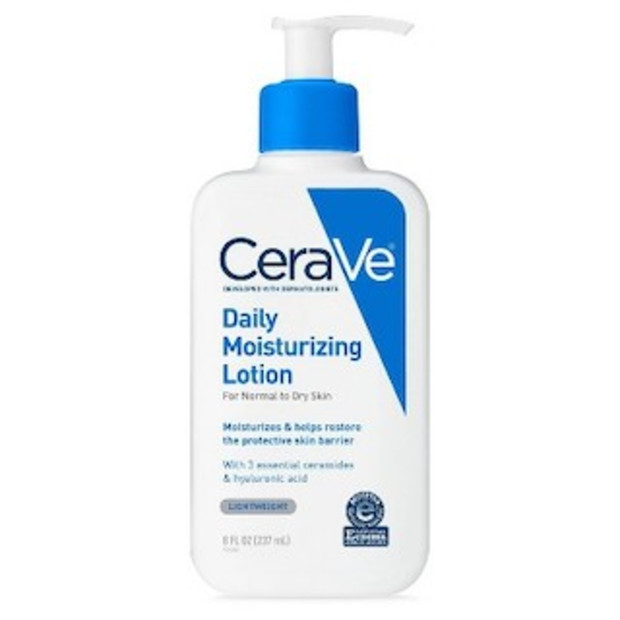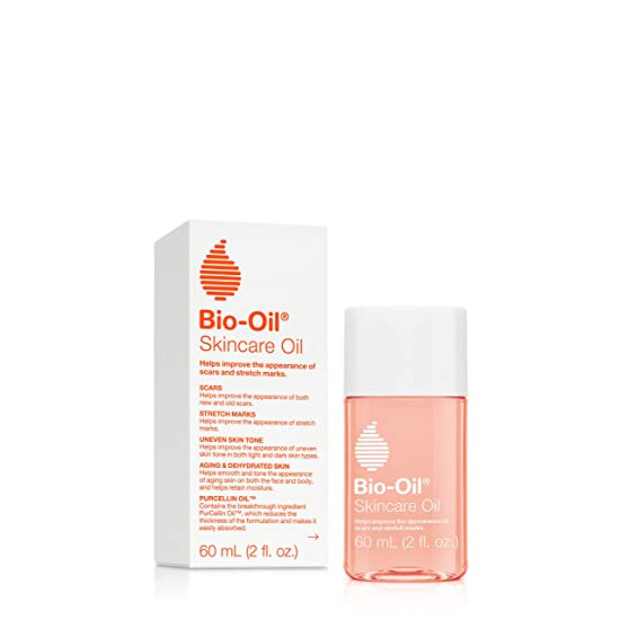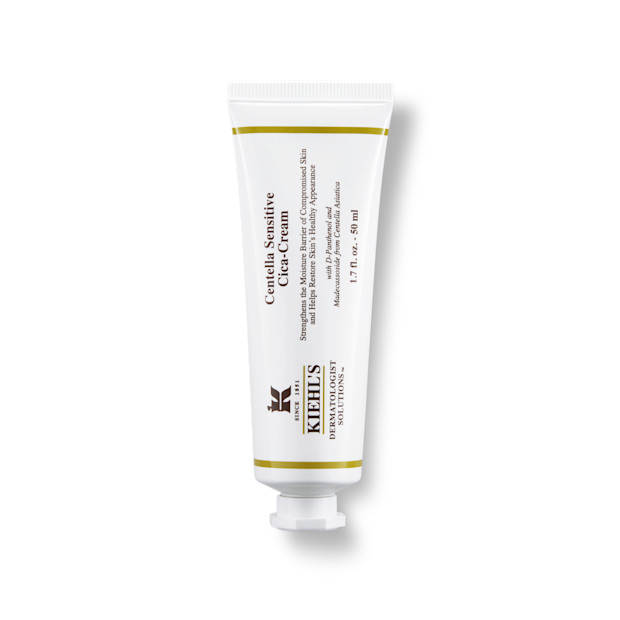
Everything You Need to Know About Stretch Marks
Stretch marks can appear on any body, including up to 80% of people who are pregnant. Here’s what to know about them.

In This Article
Love them, hate them or any feeling in between, stretch marks are a natural part of having a human body. They’re one of the most common side effects of pregnancy, but what exactly causes stretch marks? Will they last forever? And why do they appear wider, longer or darker on some people but thinner, shorter or lighter on others?
Despite around 80% of pregnant women having stretch marks, there are still a lot of questions about them. So whether you saw stretch marks appear on your skin during pregnancy or you’re newly pregnant and curious about what lies ahead for your expanding skin, we’ve got answers to the most common questions about stretch marks.
What are stretch marks, and what causes them?
“Stretch marks are indented scars that appear when our skin stretches quickly,” says Dr. Carrington, ob-gyn and founder of Radiance Women’s Center in Orlando, FL. On average, you gain anywhere between 11 and 40 pounds and around 40 centimeters (15-16 inches) from the pelvic bone to the top of the uterus—all that in just nine months means the skin around your midsection is going through a lot in a relatively short amount of time.
“The abrupt change causes collagen and elastin (the proteins that give our skin its strength and flexibility) to rupture, leaving behind an irregular, streaking pattern," Dr. Carrington explains.
So what you’re seeing are actually scars, though not the same scarring you’d have after a deep wound or major surgery. Stretch marks that happen during pregnancy are most likely to appear on your belly and breasts, but you might also find them on your thighs, butt, underarms...or just about anywhere you have skin, really.
Do stretch marks only happen during pregnancy?
Nope! They are more common among people who have been pregnant thanks to all the hormones and rapid skin stretching involved, but stretch marks also commonly occur during any other time of rapid growth or weight fluctuations, says Dr. Carrington.
They can appear in any gender and at any age, especially during puberty, and aren’t necessarily a sign that someone has been pregnant before.
Are stretch marks harmful at all?
You might feel a little itchy when stretch marks first appear, much like with most scarring, but moisturizers like lotion or body oil typically help. And any irritation is likely to go away pretty quickly. Other than that, stretch marks are totally harmless and perfectly normal.
How to get rid of stretch marks
In short, you can’t. “Stretch marks, like all other scars, are permanent,” Dr. Carrington says.
If they’re a bother to you, what you can do is try to reduce their appearance with one or more of the various treatment options out there, including topical and/or procedural treatments.
If you try a topical treatment like a cream, gel or oil, there’s no guarantee for perfect results, Dr. Carrington warns, despite what many brands might claim. But the more you use it, the better your results are likely to be. The recommendation from dermatologists is to apply topical treatments on your stretch marks early and often—every day starting from the beginning of pregnancy (before stretch marks even have a chance to appear) through the postpartum period.
What topical products work best? Most doctors and dermatologists recommend products with hyaluronic acid (promotes collagen production) or retinoids/vitamin A (just use caution and remember that retinoids are not recommended for pregnant or breastfeeding people). Studies haven’t shown any evidence in favor of home remedies like olive oil, cocoa butter, aloe vera or vitamin E.
The other option is a procedural treatment. Things like ultrasound, radiofrequency, laser therapy, microdermabrasion and chemical peels might reduce the appearance of stretch marks much more quickly, but they’re also much more expensive. But no matter what treatment option you choose to diminish your stretch marks, Dr. Carrington says, “No medication or procedure will get rid of them completely.”
What if your stretch marks are several years old? While they do tend to fade as time passes (typically turning from pinkish to more silvery), the older stretch marks are, the less their appearance will be reduced by treatments.
Do stretch marks change with every pregnancy?
There’s no guarantee where, how many or even if stretch marks will appear during pregnancy, and if you’ve already been pregnant once, that doesn’t necessarily mean your skin will behave the same way for any additional pregnancies. It may be that your next pregnancy doesn’t cause any more stretch marks since your skin got so stretched out from before. Or maybe, Dr. Carrington says, you might gain more weight or carry differently in your next pregnancy, causing your skin to stretch more or in a different direction and leading to additional stretch marks. Unfortunately, there’s no real way to tell until the scars appear.
Why some stretch marks look different
Are your stretch marks large and dark, yet your friend’s are small and light? And your other (very pregnant) friend doesn’t have any stretch marks at all! What’s the deal? “Genetics play a large role in whether or not you will develop stretch marks and, if you do, how they will appear,” Dr. Carrington says. For example, you’re much more likely to have visible stretch marks if you have lighter skin, are higher in weight, use steroid medications or have a family history of stretch marks or scarring.
How to prevent stretch marks
Similar to trying to get rid of existing stretch marks, a lot of common home remedies like oils and butters won’t do much to prevent stretch marks from appearing in the first place—regardless of often you apply them before you get pregnant (though it certainly doesn’t hurt to have well-moisturized skin!). But there is some good news; research points to Centella asiatica (an herb also known as Indian pennywort) and hyaluronic acid as substances that may prevent stretch marks.



